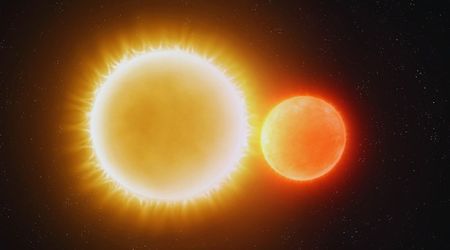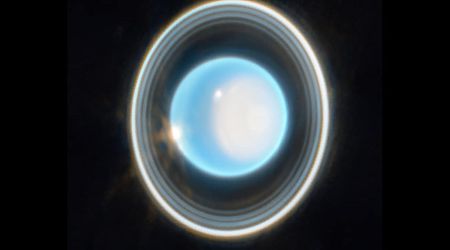NASA's Roman Space Telescope clears shake test for its core components, one step closer to launch

NASA’s Nancy Grace Roman Space Telescope has completed vibration testing successfully to ensure its functionality in space. This test determined its ability to endure the extreme shaking during launch and would allow it to discern the mysteries of the universe. “The test could be considered as powerful as a pretty severe earthquake, but there are key differences,” stated Cory Powell, the Roman lead structural analyst at NASA’s Goddard Space Flight Center in Greenbelt, Maryland. The test went through different frequencies, one at a time, unlike an earthquake.
The test began at “low-level amplitudes” and then slowly increased as the team checked how each aspect withstood the test. “It’s a very complicated process that takes extraordinary effort to do safely and efficiently,” Powell added. The launch conditions experienced were simulated to be as close to the actual event as possible. The test also managed the conditions of the simulation to mimic 125 percent of the forces the observatory would experience. Joel Proebstle, who led this test at NASA Goddard, said that it was conducted in a flight-powered configuration.
Core Components for NASA’s Roman Space Telescope Pass Major Shake Test: The core portion of NASA’s Nancy Grace Roman Space Telescope has successfully completed vibration testing, ensuring it will withstand the extreme shaking experienced during launch. P… https://t.co/BFFbegYLnX pic.twitter.com/uVbxve7kld
— Elysia Segal (@elysiasegal) June 4, 2025
The team “filled the propulsion tanks with approximately 295 gallons of deionized water to simulate the propellant loading on the spacecraft during launch,” Proebstle added. The Roman Space Telescope was subjected to a period of intense testing. Jack Marshall, who led integration and testing for these parts at NASA’s Goddard, stated that this completion prepared them to “attach the flight solar array sun shield to the outer barrel assembly and deployable aperture cover,” as reported by Phys Org.

After this, the team will complete the remaining environmental tests for the flight assembly and go on to connect Roman’s two major assemblies. The team and the telescope will be launch-ready when the full observatory is put through testing. Presently, Roman contains two major assemblies: the inner, core portion (telescope, instrument carrier, two instruments, and spacecraft) and the outer portion (outer barrel assembly, solar array sun shield, and deployable aperture cover), as per NASA. The team will take the core portion to the large clean room for post-test inspections.

Goddard technicians ensured that the Roman’s outer portion was functional and able to control the temperatures in the vacuum of space. When all the components come together, the clean room inspection will confirm if everything is aligned properly and if the high-gain antenna is deployable. The core portion will also undergo additional tests of the electronics and a thermal vacuum test to ensure its smooth functioning in space’s harsh environment. According to Phys Org, the spacecraft and integrated payload assembly are tested separately, with additional assessments to be more thorough.
The assembly is to take place in November, with a whole observatory ready by the end of the year. As the observatory steadily completes tests and inspections, it remains on schedule for a May 2027 launch, the earliest launch being the fall of 2026. Roman is expected to be shipped to the launch site at NASA’s Kennedy Space Center in Florida for launch preparations in summer 2026. NASA noted that the Nancy Grace Roman Space Telescope will be a milestone in space study as it will answer essential questions about the role of dark energy and other cosmic mysteries.









